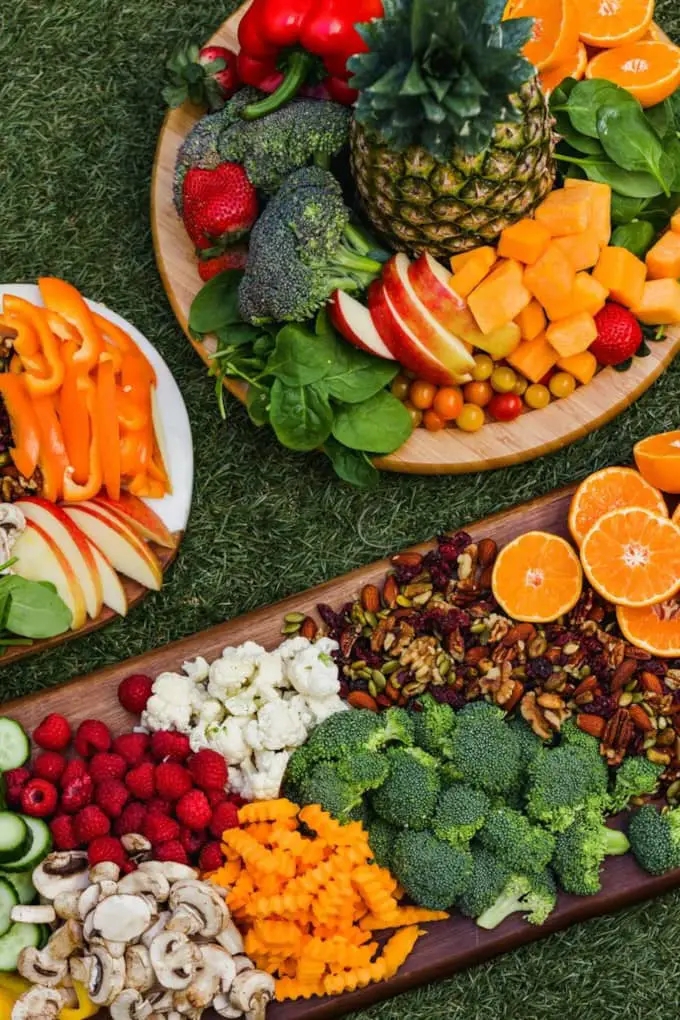How can mothers manage well their kitchen? This article lists 12 kitchen management ideas to keep everyone in the family healthy and strong, plus an extensive list of sources of vitamin C.
Essential Kitchen Management Tips
You may already know some of these kitchen management tips, but chances are you miss some. See which ones on the list are familiar to you and which ones you need to do to manage your home.
1. Cooking Oil
Use cooking oil when it’s still crystal clear. Dispose it when it turns super dark brown. Studies have shown that used cooking oil as well as toxic fumes can cause cancer, heart ailment, etc. It is also a hazardous waste that can cause environmental pollution.
2. Expiry Dates
Check the expiry dates of your food once a month, in the fridge and pantry alike. You might consume expired foods that’s bad for the health.
3. Canned Goods
Have a back up canned goods or few noodles for emergency cooking when you’re running out of time, but not too much. Canned or preserved foods are very unhealthy for you and your family. The harmful chemical content from can goods and noodles takes days before it leaves or flushes away from your body.
Also, when buying canned goods, make sure that there are no dents or breaks as these could leach harmful substances from the can and also external sources.
4. Home Grown Food
Grow your own foods as this ensures you get food without harmful pesticides. You control what you used to grow the plants. You can always plant veggies and fruits in your garden and backyard.
If you got a smaller space in your garden, that’s okay—You can even plant fruits in big pots like papaya, guava, lemon, lime, calamansi, apple, oranges etc. and have herbal plants in your kitchen. This way you ensure a fresh healthy foods straight on your table and you get to save money.
5. Keeping Veggies Fresh
Place veggies in brown paper and store on the fridge. You can also slice the brown tip area (spoiled part) of a broccoli, cabbage and lettuce, then rub the tip with a lemon or a calamansi. These techniques make its lifespan longer.
Another way to make your veggies stay fresh longer is to put onion and garlic on the veggies compartment of your fridge. And another for the ones you store in the kitchen’s dark area.
Carrots, potato, sweet potato, cucumber, fresh young corn last a little while than the other veggies. And stay longer too with an onion and garlic beside it.
6. Water Container
Have a water jug ready for your kids at the school, church and travels. Instead of soft drinks, drink water for rehydration. Forget the costly offering of drinks high in sugar that gives more problems than solutions.
7. Milk for the Family
Give your family — kids, husband and yourself warm milk in the morning for stronger bones and stamina they need for the entire day. It is calcium-rich food that ward off health problems because of poor nutrition.
8. Cooking Time
Always cook veggies and herbs for 5 minutes or less only to keep its healthy nutrients. According to Healthline, water-soluble vitamins such as vitamins B and C and also fat-soluble vitamins like vitamins A, D, E, and K are reduced during cooking.
9. Reheating Meals
When you reheat meals for dinner, remove first the cooked veggies and place them again when the soup is already boiling. Then turn off the gas range or gas stove.
10. Dealing with Picky Eaters
You always have picky eaters in the family. Thus, to ensure your kids have the best nutrients they need — you can opt to have homemade vegan foods like vegan burger, vegan meatballs, vegan American pizza, vegan Japanese sushi, vegan broccoli Alfredo, vegan lumpia shanghai, or a vegan salad, etc.
11. Healthy Herbs
Fresh herbs e.g. celery, basil, ginger, turmeric, onion, garlic, parsley, lemongrass, rosemary, jalapeno, red bell pepper, taste much better with your homemade broth and soup rather than the store-bought Maggi seasoning or Magic Sarap. Plus healthier too, as it has antibodies to combat and prevent ailments.
12. Fresh Fruits and Vegetables
Always have fresh veggies and fruits at home for proper nutrition of your family to keep them healthy and away from bacteria that cause ailments. As long as these veggies and fruits are grown organically, there will be no apprehension about harmful pesticides that pose a health threat.
You can get the right nutrients, particularly the Vitamin A and Vitamin C, from fresh fruits and veggies for your kids, husband and yourself.
Our family always has such an endless active physical activities day to day, hence we need to ensure they have balanced, healthy nutrients each day.
I list the health benefits below along with rich sources of Vitamin C in vegetables and fruits. Just take your pick. Make sure that most of these are found near your kitchen.
The Health Benefits of Vitamin C
- Improves cardiovascular health and narrows down the heart disease, high blood pressure concerns, diabetes, thyroid, asthma and even fights cancer.
- Loaded with antioxidants that neutralize and flush out free radicals from foods with preservatives (e.g. canned goods, instant noodles, soda, coffee) from our bodies.
- Aids in collagen formation for beautiful glowing skin and younger looking skin by fighting the damaging effect of UV rays from too much sun exposure.
- Rich in anti-inflammatory and antimicrobial properties that cure infections.
28 Topmost Veggies Rich in Vitamin C
- Ampalaya or bitter gourd or bitter melon (Momordica charantia)
- Bokchoy or Chinese cabbage or pechay (Brassica rapa)
- Chili pepper (Capsicum annuum, Capsisum frutescens)
- Corn (Zea mays) also known as maize in Spanish
- Scallions or onion leaves (Allium fistulosum)
- Cauliflower (Brassica oleracea var botrytis)
- Jicama or singkamas (Pachyrhizus erosus)
- Dandelion greens (Taraxacum officinale)
- Ladyfinger or okra (Hibiscus esculentus)
- Zucchini (Cucurbita pepo) from Mexico
- Broccoli (Brassica oleracea var botrytis)
- Spinach or alugbati (Spinacia inermis)
- Mustard green leafy (Brassica juncea)
- Summer squash (Cucurbita pepo)
- Asparagus (Asparagus officinalis)
- Sweet potato (Ipomoea batatas)
- Bell pepper (Capsicum annuum)
- Malunggay (Moringa oleifera)
- Potato (Solanum tuberosum)
- Cucumber (Cucumis sativus)
- Swiss chard (Beta vulgaris)
- Celery (Apium graveolens)
- Kale (Brassica oleracea)
- Tomatoes (Lycoersicon)
- Lettuce (Lactuca sativa)
- Carrots (Daucus carota)
- Turnips (Brassica rapa)
- Onion (Allium cepa)
35 Topmost Fruits Rich in Vitamin C

- Cherries (sweet cherries – Prunus avium, sour cherries- Prunus cerasus)
- Avocados or avocado pear (Persea americana)
- Pineaple (Ananas comosus or Ananas sativus)
- Bananas (Musa Acuminata, Musabalbisiana)
- Grapefruit (Citrus decumana, Citrus grandis)
- Guyabano or Soursop (Annona muricata)
- Mangoosteen (Garcinia mangostana)
- Blueberries (Vaccinium corymbosum)
- Cranberries (Vaccinium macrocarpon)
- Marang (Artocarpus odoratissimus)
- Rambutan (Nephelium lappaceum)
- Lanzones (Lansium domesticum)
- Pomegranates (Punica granatum)
- Strawberries (Fragaria ananassa)
- Passion fruit (Passiflora edulis)
- Kiwi fruit (Actinidia deliciosa)
- Mangoes (Mangifera indica)
- Apricots (Prunus armeniaca)
- Prunes (Prunus domestica)
- Raspberries (Rubus idaeus)
- Raisins (Solanum centrale)
- Dates (Diospyros blancoi)
- Limes (Citrus aurantifolia)
- Guavas (Psidium guajava)
- Oranges (Citrus sinensis)
- Pomelos (Citrus maxima)
- Coconut (Cocos nucifera)
- Plum (Prunus domestica)
- Apple (Malus domestica)
- Peaches (Prunus persica)
- Lychee (Litchi chinensis)
- Pears (Pyrus communis)
- Papaya (Carica papaya)
- Lemons (Citrus limon)
- Grapes (Vitis vinifera)
References
Balkrishan, A., Tanwar, S., & Prajapati, U. B. (2021). Medicinal and Nutritional Aspect of Genus Prunus L. with Phytoetymology. Int. J. Unani Integr. Med, 5, 24-27.
Bendich, A., & Langseth, L. (1995). The health effects of vitamin C supplementation: a review. Journal of the American College of Nutrition, 14(2), 124-136.
Das, A. K., Nanda, P. K., Chowdhury, N. R., Dandapat, P., Gagaoua, M., Chauhan, P.,… & Lorenzo, J. M. (2021). Application of pomegranate by-products in muscle foods: Oxidative indices, colour stability, shelf life and health benefits. Molecules, 26(2), 467.
Fraser, S., & Lyon, P. (2018). Chef perceptions of modernist equipment and techniques in the kitchen. Journal of culinary science & technology, 16(1), 88-105.
Jaafar, H. J. (2021). Effects of Apricot and Apricot Kernels on Human Health and Nutrition: A Review of Recent Human Research. Technium BioChemMed, 2(2), 139-162.
Kaur, B., Rowe, B. H., & Stovold, E. (2009). Vitamin C supplementation for asthma. Cochrane database of systematic reviews, (1).
Li, Q. Y., Munawar, M., Saeed, M., Shen, J. Q., Khan, M. S., Noreen, S., … & Li, C. X. (2021). Citrullus colocynthis (L.) Schrad (Bitter Apple Fruit): Promising traditional uses, pharmacological effects, aspects, and potential applications. Frontiers in Pharmacology, 12.
Nemzer, B. V., Al-Taher, F., Yashin, A., Revelsky, I., & Yashin, Y. (2022). Cranberry: Chemical Composition, Antioxidant Activity and Impact on Human Health: Overview. Molecules, 27(5), 1503.
Perumal, A., AlSalhi, M. S., Kanakarajan, S., Devanesan, S., Selvaraj, R., & Tamizhazhagan, V. (2021). Phytochemical evaluation and anticancer activity of rambutan (Nephelium lappaceum) fruit endocarp extracts against human hepatocellular carcinoma (HepG-2) cells. Saudi Journal of Biological Sciences, 28(3), 1816-1825.
Sabtain, B., Farooq, R., Shafique, B., Modassar, M., & Ranjha, A. N. (2021). A narrative review on the phytochemistry, nutritional profile and properties of prickly pear fruit. Open Access J. Biog. Sci. Res, 7.
Yao, P. F., Gao, Y., Simal-Gandara, J., Farag, M. A., Chen, W., Yao, D., … & Wang, Y. (2021). Litchi (Litchi chinensis Sonn.): A comprehensive review of phytochemstry, medicinal properties, and product development. Food & Function.
[cite]




2 thoughts on “12 Kitchen Management Tips for Better Health”